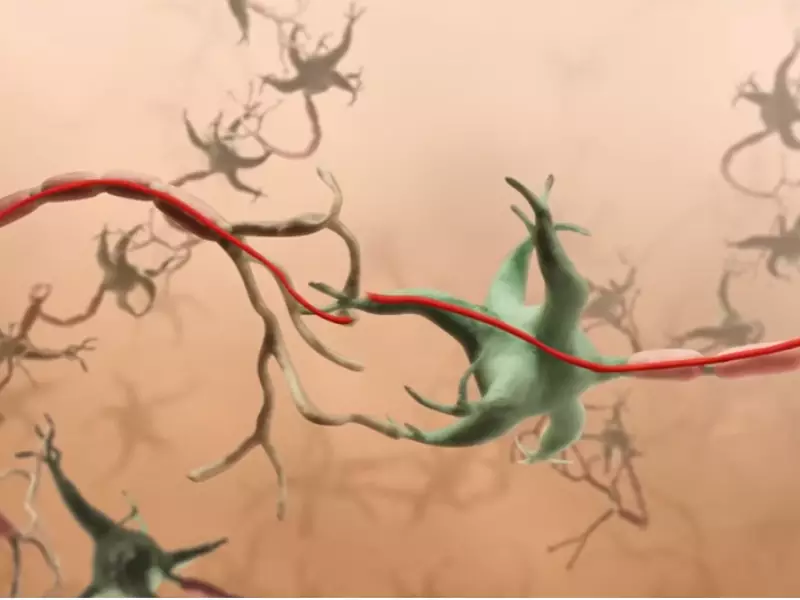In the intricate world of biology, two terms frequently surface, stirring curiosity and often confusion: synapse and synapsis. These concepts, though sounding similar, delineate distinct phenomena within the biological sciences. Their roles, embedded deeply within the fabric of cellular communication and genetic mechanisms, are pivotal to understanding how life functions at a molecular level.
Synapse refers to the junction between two nerve cells, enabling the transmission of electrical or chemical signals, a cornerstone of neuronal communication in the nervous system. Synapsis, on the other hand, is a process occurring during meiosis, where homologous chromosomes pair up, allowing for genetic recombination and variation. Despite their phonetic similarity, these terms capture very different aspects of biological processes.
The significance of synapse lies in its role in facilitating communication across neurons, influencing everything from muscle contractions to complex behaviors. Synapsis plays a crucial role in genetic diversity, ensuring the shuffle of genetic materials to produce unique genetic combinations in offspring. Both processes are essential, yet they operate in completely different contexts and scales within the organism, highlighting the diversity and complexity of life’s foundational mechanisms.

Synapse Defined
Definition and Function
A synapse is a specialized junction through which neurons signal to each other and to non-neuronal cells such as muscles or glands. This communication is essential for the proper functioning of the nervous system, affecting everything from muscle contraction to mood regulation. At its core, a synapse allows for the transmission of electrical or chemical signals across neurons, facilitating complex processes like thought, memory, and movement.
Types of Synapses
There are primarily two types of synapses based on the nature of signal transmission:
Electrical Synapses
- Direct connection between neuronal cells.
- Allow the fast transfer of signals through gap junctions.
- Synchronize activity among groups of neurons.
Chemical Synapses
- Indirect signal transmission.
- Use neurotransmitters to carry signals across the synaptic gap.
- More common than electrical synapses, allowing greater complexity and control.
Role in Nervous System
Synapses are pivotal in the nervous system, enabling the vast network of neurons to communicate effectively. They allow the brain to process and respond to the environment, regulate bodily functions, and form the basis of learning and memory. Without synapses, the neurons in our nervous system would be isolated units, unable to orchestrate the symphony of signals that underlie every thought, action, and sensation.
Synapsis Explained
Definition and Purpose
Synapsis is a critical event during meiosis where homologous chromosomes pair up, aligning themselves side by side. This process is fundamental for genetic recombination and the accurate segregation of chromosomes during cell division. It ensures that genetic material is mixed and distributed evenly, contributing to genetic diversity among offspring.
Occurrence and Timing
Synapsis occurs during prophase I of meiosis, a special type of cell division that produces gametes—sperm in males and eggs in females. This pairing is facilitated by a structure called the synaptonemal complex, which aligns chromosomes precisely, allowing for the exchange of genetic information.
Significance in Genetics
The significance of synapsis in genetics cannot be overstated. It is during this process that crossing over occurs, where segments of DNA are exchanged between homologous chromosomes. This recombination is a key source of genetic diversity, ensuring that offspring inherit a unique mix of traits from their parents.
Key Differences
Understanding the distinctions between synapse and synapsis is crucial for comprehending their roles in biology. While both are fundamental to the functioning of living organisms, they operate in entirely different contexts.
Structural Distinctions
- Synapse: Involves neurons and can be either electrical or chemical in nature.
- Synapsis: Concerns the pairing of homologous chromosomes during meiosis.
Functional Variations
- Synapse: Facilitates the transfer of information within the nervous system.
- Synapsis: Enables genetic recombination and proper chromosome segregation.
Biological Context
- Synapse: Central to nervous system communication and brain function.
- Synapsis: Key to genetic diversity and sexual reproduction.
Synapse Details
Neuronal Connections
The synapse plays a critical role in forming neuronal circuits, allowing neurons to establish intricate networks. These connections are dynamic, strengthening or weakening in response to activity, which is fundamental to the brain’s ability to learn and adapt.
Electrical vs. Chemical Synapses
Electrical
- Fast signal transmission due to direct contact.
- Bidirectional flow of signals.
- Ideal for synchronizing neuronal activity.
Chemical
- Neurotransmitters bridge the gap between neurons.
- Allows for amplification and modulation of signals.
- Unidirectional flow, from the presynaptic to the postsynaptic neuron.
Impact on Brain Function
Synapses are not just physical structures but are also involved in the brain’s plasticity—its ability to change and adapt over time. Learning, memory, and adaptation to new information or environments are all mediated by synaptic activity. The modulation and strength of synaptic connections underlie cognitive functions, demonstrating the synapse’s profound impact on brain function.

Synapsis Deep Dive
Chromosomal Pairing
Chromosomal pairing, or synapsis, is the process where homologous chromosomes come together to form a pair during the early stages of meiosis. This critical event facilitates genetic diversity through crossing over, where the DNA is exchanged between chromosomes. Each chromosome consists of two sister chromatids joined at the centromere, and during synapsis, homologous chromosomes align lengthwise, setting the stage for recombination.
Stages of Meiosis
Meiosis is divided into two consecutive phases, Meiosis I and Meiosis II, each comprising several stages:
Prophase I
- Chromosomes condense and synapsis occurs, forming tetrads.
- The synaptonemal complex forms, aligning homologous chromosomes.
Metaphase I
- Tetrads align at the cell’s equatorial plane.
- Spindle fibers attach to centromeres.
Anaphase I
- Homologous chromosomes separate, moving to opposite poles.
- Sister chromatids remain attached.
Telophase I and Cytokinesis
- Cells divide, forming two haploid cells with chromosomes still in chromatid pairs.
Meiosis II
- Similar to mitosis, where sister chromatids are finally separated, resulting in four haploid cells.
Genetic Recombination
Genetic recombination during synapsis is a pivotal mechanism for introducing genetic variation. It involves:
- The physical exchange of DNA segments between non-sister chromatids of homologous chromosomes.
- The creation of new allele combinations, contributing to diversity in populations.
Comparative Analysis
Table of Differences
| Feature | Synapse | Synapsis |
|---|---|---|
| Context | Neuronal communication | Chromosomal pairing in meiosis |
| Structure | Gap junctions or synaptic cleft | Synaptonemal complex |
| Function | Signal transmission | Genetic recombination |
| Occurrence | Throughout life | Specific to meiosis |
Visual Aids
- Diagrams illustrating the structure of a synapse and the process of synapsis.
- Charts comparing their functions and roles in biology.
Relevance in Research
Synapse in Neurological Studies
Synapses are central to research in neurology and psychiatry, investigating:
- The mechanisms of learning and memory through synaptic plasticity.
- The pathogenesis of neurological disorders such as Alzheimer’s, where synaptic dysfunction plays a key role.
Synapsis in Genetic Disorders
Synapsis has profound implications in the study of genetic disorders, particularly those related to:
- Errors in meiotic recombination, leading to chromosomal abnormalities like Down syndrome.
- The understanding of genetic diversity and its impact on disease resistance and evolution.
Educational Implications
Teaching Complex Biology
The concepts of synapse and synapsis are fundamental in biology education, requiring:
- Clear explanations and visualizations to demystify complex processes.
- Incorporation of interactive models and simulations to engage students.
Resources for Learning
To aid in the comprehension of these concepts, a variety of resources are available:
- Online platforms offering courses and videos that break down complex topics.
- Interactive textbooks and software, providing simulations of synaptic transmission and meiosis.
- Laboratory kits designed for hands-on experience with genetics and neurobiology experiments.
FAQs
What is a Synapse?
A synapse is the point of communication between two neurons, allowing for the transfer of information through electrical or chemical signals. This complex process is fundamental to the functioning of the nervous system, supporting thoughts, emotions, and physical actions.
How Does Synapsis Occur?
Synapsis occurs during the prophase I stage of meiosis, where homologous chromosomes come together and pair up. This pairing allows for the exchange of genetic information through a process known as crossing over, leading to genetic diversity in gametes.
Why is Synapse Important in Neurology?
The synapse is critical in neurology because it is the fundamental pathway through which neurons communicate, influencing brain function, learning, memory, and the overall behavior of an organism. Dysfunctions at the synaptic level can lead to various neurological disorders.
Can Synapsis Affect Genetic Disorders?
Yes, errors in the synapsis process during meiosis can lead to improper chromosomal segregation, resulting in genetic disorders and abnormalities in offspring. This highlights the importance of accurate synapsis for genetic health and diversity.
Conclusion
The exploration of synapse and synapsis unfolds the complexity and elegance of biological systems. Synapses, as the bridges of neuronal communication, play an indispensable role in the nervous system, affecting every aspect of an organism’s interaction with its environment. On the other hand, synapsis stands as a testament to the beauty of genetic variation, a process essential for the survival and evolution of species through generations. Both processes, though operating in vastly different domains, underscore the intricate dance of life, where every step, no matter how small, contributes to the tapestry of existence.
Understanding these fundamental concepts not only enriches our knowledge of biology but also opens doors to novel discoveries and advancements in medicine and genetics. As we continue to unravel the mysteries of life at the molecular level, synapse and synapsis remain key players in the narrative of biological science, illustrating the endless possibilities that lie within the microscopic world.
